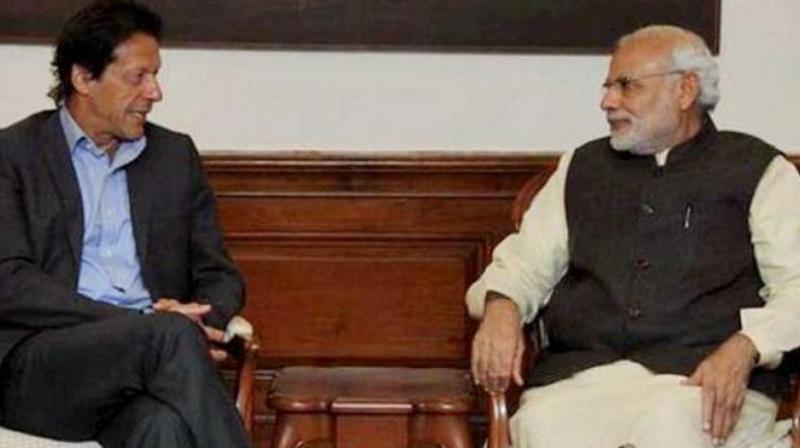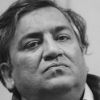Kartarpur can help restart India-Pak talks

Dekha to phir vaheen thay chalay thay jahan se hum
Kashti kaysaath saath kinaray chalay gaye
(We found ourselves to be where we had begun our journey. The coast moved as did the boat.)
The above is a couplet by Saifuddin Saif. Many of you will be familiar with his name as a poet of exceptional talent who carved a prominent place for himself among the progressive giants of his time. He traversed a familiar course, via Amritsar and Lahore, that brought enlightenment and fame to him and many of his contemporaries.
Saif was also a filmmaker with a message, and his name flashed in the mind just as a group of Pakistanis and Indians gathered together on the front lines to mark the opening of a corridor that will facilitate Indian visitors to Gurdwara Kartarpur in Narowal.
Saifuddin Saif directed — and wrote and produced — Kartar Singh in the late 1950s, which has to be one of the more discussed feature films made in Pakistan. In recent years, the film has been screened for selective viewing and a very watchable version of it is available on the Internet. It is invaluable material for those who want to get a hang of what makes Pakistan and India and their relationship what it is.
Saif’s is a complex story of human bonding and conflicts, culminating in a born-again good-doer Kartar Singh’s accidental but perfectly explicable killing just when he is about to bring the people on this side of the border their missing son from the land beyond.
Saif as a socialist — or was he a communist? — must never have wanted it that way but the progress on Kartar Singh’s theme has been slow and sluggish. The fact that we have been unable to remake “Kartar Singhs” with the frequency that the urgency of the topic demanded is reflective of just how tough it has been.
We — meaning those who agree with the idea of peace in Pakistan and India — have spent the last seven decades waiting for the right combination. The right setup on our side and a corresponding viable equation on the other side to provide us with real hope for a peace dialogue. It has been observed that as popular contributions go, we had a slightly better chance of helping develop the right combination on our side.
The hope always was that sober people on the other side, with whom we have shared a common heritage, would simultaneously find and establish their own “right” combo for the two countries to engage in a “meaningful” search for solutions.
There has been a clearance sale of formulas. Formulas that can bring about a miraculous friendship between people who cohabited a country before a partition, an inevitable event in the end, separated them and placed some new real or imagined constraints upon them. The simplest of them all was the one which found expression in Gen. Pervez Musharraf’s peace expedition to India in 2001, the Agra near-miracle as it is remembered with some sense of loss.
Some of his admirers believe to this day that Gen. Musharraf possessed some secret charms that he could work on those he met. In a long series of shortcut answers, he epitomised the one-man squad from Pakistan, who almost succeeded, with his disarming personality, to steal some kind of a permanent solution from right under the noses of Prime Minister Atal Behari Vajpayee and his associates. But right then, Indian democracy intervened to thwart Musharraf’s heist.
It is considered by so many in the country to have been a close miss. Since we in Pakistan often consider consensus to be as undesirable a byproduct of democracy as democracy itself, it was thought by many here that Musharraf’s effort was in vain; we will have to wait for another general with the required dare and dash to try and conquer India for us again — unless, we from the beginning have believed in the alternative solution.
The alternative solution was actually the real answer. It was the original answer. Maybe more so in recent decades but perhaps even before that, we in Pakistan have been told that there will be some definite signs indicating real and irreversible positive movement on India. We have been fed the notion that there will have to be total agreement between an elected government led by a politician from a federally dominant Punjab and the country’s military chief for any hope of headway in ties with India.
This was one reason why those steeped in old logic would be so eager to keep an eye on what kind of relationship Nawaz Sharif, three-time Prime Minister of Pakistan, had with his Army Chief. In time, the monitors realised that Mian Sahib possessed an uncanny ability to distance his Army Chief from the avowed ideals, peace with India included, which the PML(N) chief held dear as Prime Minister. The dream was shattered for those swearing by the theory — to find later another manifestation of their ideal combination in the Imran Khan-Gen. Qamar Bajwa pairing.
The new expectations and dreams are linked to the overtures the jadoo ki japphi or the miraculous healing influence that Gen. Bajwa’s greeting of Indian ex-cricketer and politician Navjot Singh Sidhu in Islamabad in August signified. The Kartarpur opening, which was inaugurated on Wednesday, is a most welcome restart that will hopefully not be allowed to turn into a wasted opportunity and not be allowed to act as some kind of a gloss-over event to eclipse serious disputed areas that must be sensibly embraced and talked through.
By arrangement with Dawn

